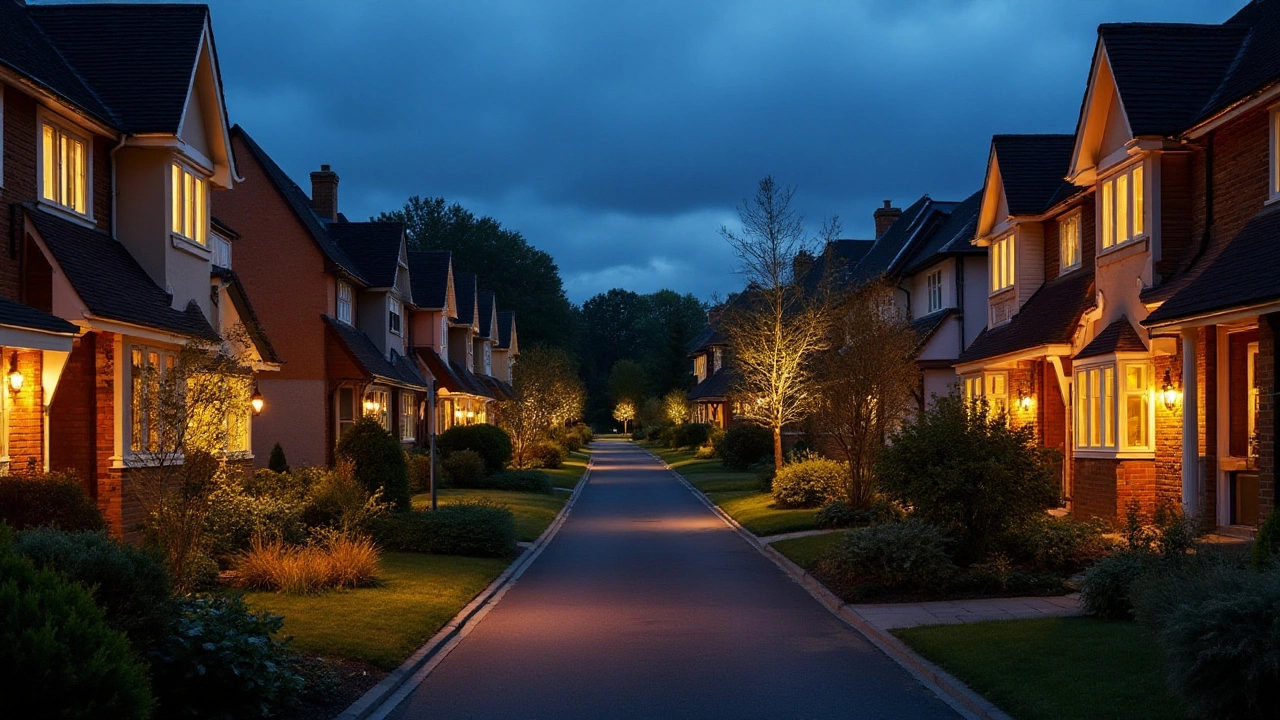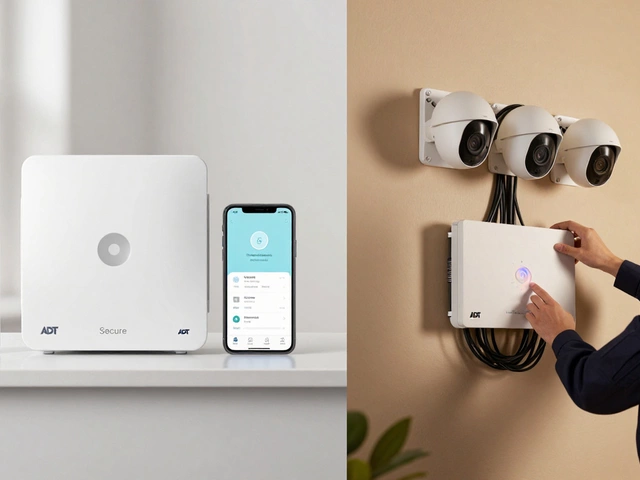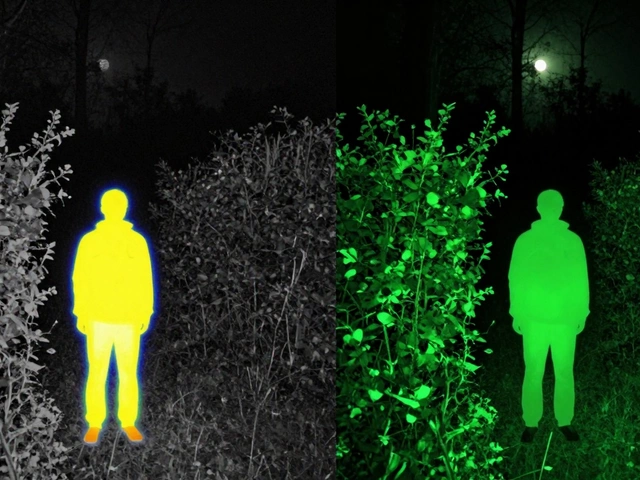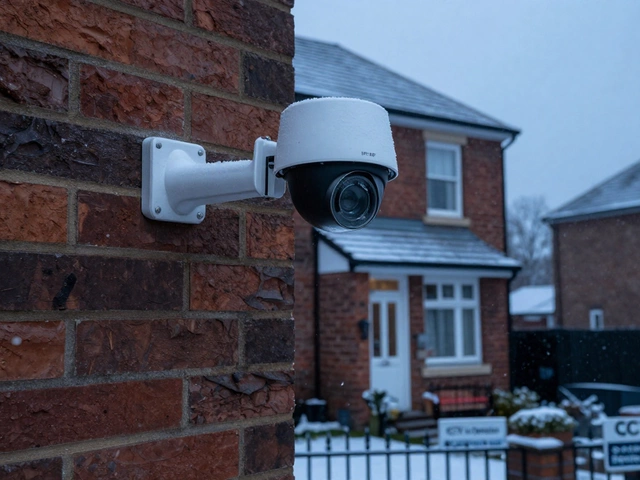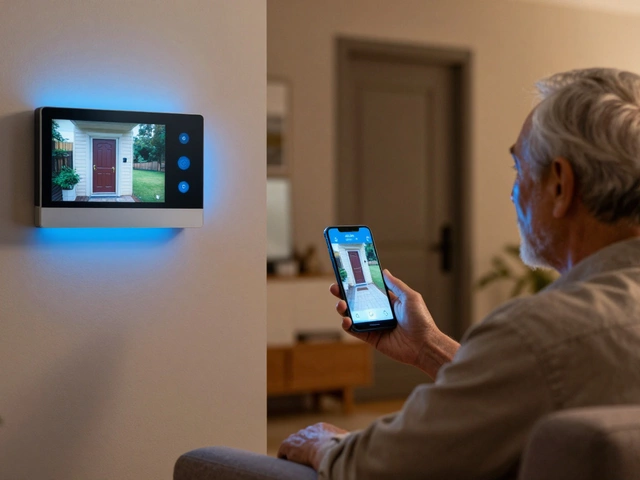Lighting is an art, and when it comes to outdoor security, it's also a science. The color of LED lights plays a crucial role in visibility and energy usage, affecting how safe and secure your environment feels. While white light is often favored for its broad illumination capabilities, other colors can offer unique benefits and challenges.
In the realm of security lighting, choosing the right LED color isn't straightforward. It requires a balance of aesthetics and functionality. Each color has its quirks, and understanding these can be the key to making a wise choice for your outdoor spaces. The decision might seem like a simple one, but it carries weighty considerations that affect everything from energy efficiency to light pollution.
- Importance of LED Color in Security Lighting
- Challenges in Finding the Right LED Color
- Impact of LED Color on Security and Safety
- Tips for Choosing the Best LED Color
Importance of LED Color in Security Lighting
The LED color chosen for your outdoor security lights does far more than alter the hue of your surroundings; it shapes the very perception of your property at night. Why does color matter so much? It's simple: the right shade can enhance visibility, improve safety, and even deter potential intruders. During the evening hours, natural visibility diminishes, and artificial lighting takes center stage. Using the optimal color does not only illuminate potential hazards but also helps in creating a well-defined perimeter that discourages unwanted visitors.
When considering security lighting, the commonly favored crisp white light offers excellent visibility. This clarity helps security cameras capture a more detailed image, which is vital in identifying intruders. Another color aspect often considered is cool white, which casts a bluish tone known for mimicking daylight. This attribute makes it an ideal candidate for security purposes, as it maximally highlights details in darker areas. On the other hand, warm white lighting, known for its yellowish hue, may create a more inviting ambiance but tends to wash over fine details, possibly compromising security.
The impact of color on human psychology is equally significant. The color adjustments have profound effects on how individuals perceive their environment. A property bathed in stark white lighting might convey a sense of alertness and vigilance, suggesting proactivity in security measures. Moreover, there is a thermal component to consider. LEDs with a higher CCT (correlated color temperature) such as bright white or cool daylight emit less of the heat associated with high-pressure sodium or halogen lamps, thereby increasing efficiency while reducing operational costs.
Why Does LED Color Matter?
It's critical not to overlook the broader environmental effects. Poorly chosen lighting colors contribute to light pollution, which detracts from the night sky and disrupts local wildlife. For environmentally conscious homeowners, selecting a lighting color that minimizes light pollution, like a subdued amber, could benefit both their footprint and their community. As stated by Dr. Lucien M. Marion, an expert on ecological impacts of lighting,“The intensity and color of outdoor lighting are crucial in preserving night-time ecology. The right choices ensure safety without sacrificing the natural rhythm of life around us.”This balance ensures you're not only securing your property but also being responsible to your surroundings.
A simple comparison in efficacy tells us that LEDs, despite varied colors, offer considerable energy savings compared to their older counterparts. An efficient setup can rely on a well-chosen combination of LED colors to suit different security needs, striking a balance between aesthetic appeal and functional security. Proper installation and thoughtful choice can create layered lighting that enhances safety while being visually appealing and environmentally considerate.
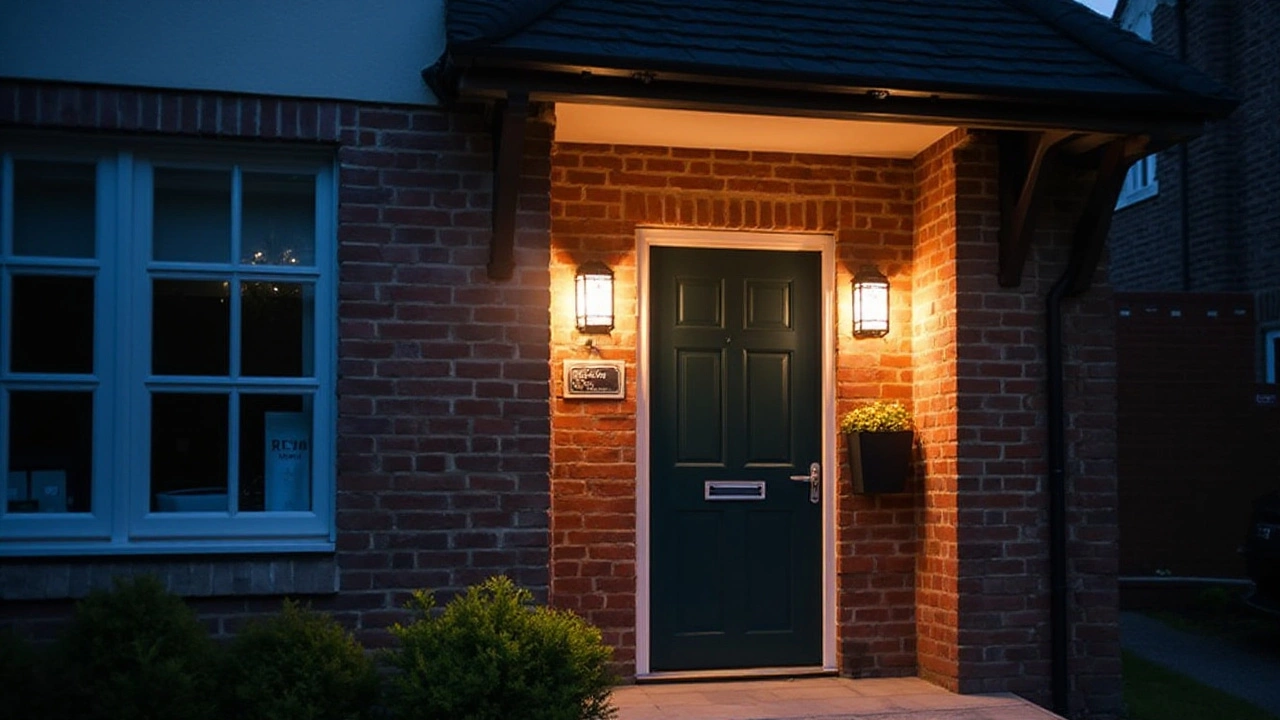
Challenges in Finding the Right LED Color
Choosing the correct LED color for your outdoor security lights involves understanding not only the functionality of different colors but also the subtleties of their impact on your surroundings. The spectrum of LED lighting offers a variety of choices, with each color serving a different function. The challenges start with the multiple factors to consider including brightness, energy efficiency, and potential psychological effects. Since outdoor lighting often serves the dual purposes of enhancing security and providing aesthetic appeal, finding the right color demands a careful balance.
The variability of human visual perception under different light spectra makes this selection even harder. For instance, blue LEDs might appear brighter to the human eye, but they can reduce peripheral vision, which is crucial for safety. On the other hand, lights in the red spectrum are less visually aggressive but can lack the intensity needed to deter intruders. According to a lighting engineer at the Illuminating Engineering Society, "It's essential to understand that the choice of light color can influence the behavior of those it's meant to protect and those it's meant to deter."
One must also consider technological advancements in lighting and how these influence color selection. LEDs come with adjustable spectrums and dimming capabilities, which alter the dynamic of security lighting entirely. While energy-efficient, these features could become overwhelming for someone unfamiliar with lighting technologies. Additionally, environmental factors such as fog, rain, or snow can alter how LED colors are perceived, further complicating the decision. Studies have shown, for instance, that certain LED colors can exacerbate light pollution or glare, impacting both humans and wildlife adversely.
The influence of cultural and environmental trends cannot be ignored either. As more people become environmentally conscious, the pressure mounts to select colors that are not only effective but also sustainable. Green lighting is generally perceived as eco-friendly, but it might not provide the deterrent needed for effective security purposes. Also, consider neighborhood aesthetics; sometimes, a specific LED color might clash with local architecture or heritage guidelines, limiting your choices further. Understanding these conflicts is crucial for avoiding neighborhood disputes and ensuring compliance with local regulations.
| Color | Advantages | Disadvantages |
|---|---|---|
| White | High brightness, good for overall visibility | Can cause light pollution |
| Red | Less obtrusive, energy-efficient | Lower intensity, less deterrence |
| Blue | Sharp visibility, modern look | Reduces peripheral vision |
While balancing these technical, aesthetic, and environmental factors might seem daunting, knowledge is power. Understanding the intrinsic challenges involved in picking the right LED color for security lighting enables homeowners to tailor solutions to their specific needs, capitalizing on the best of what modern lighting technology has to offer.
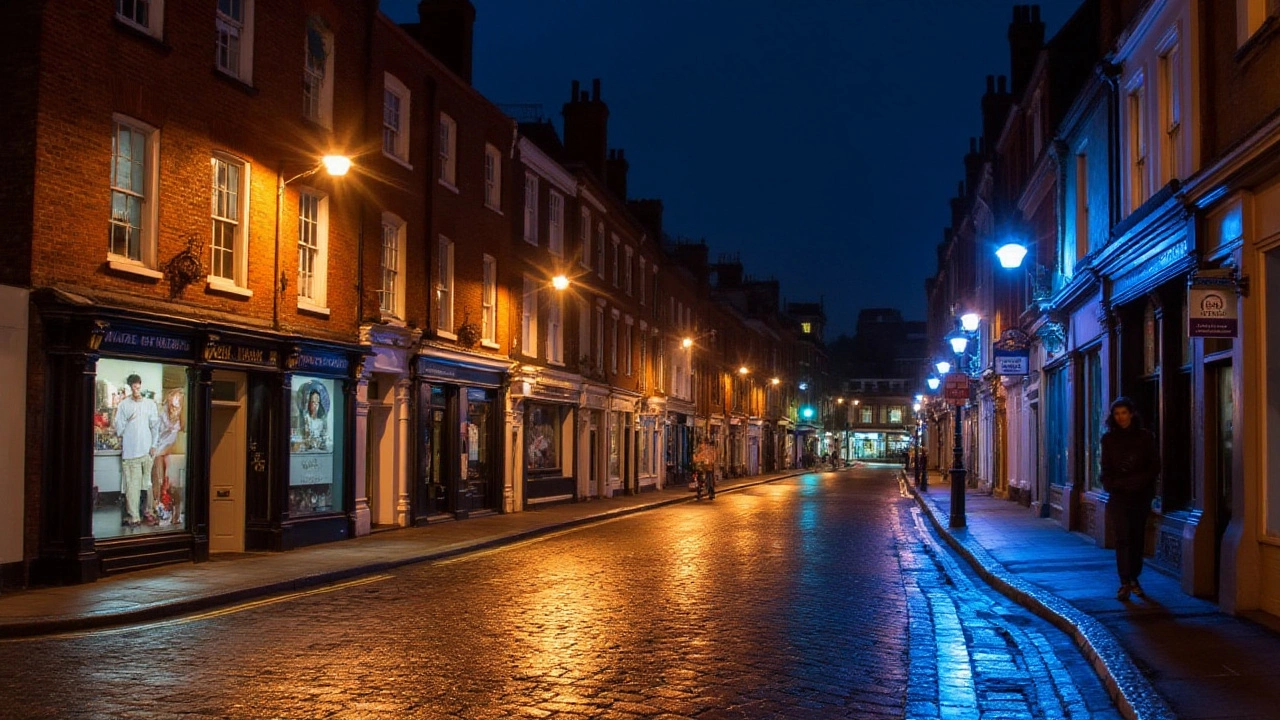
Impact of LED Color on Security and Safety
The choice of LED color for outdoor security lighting can significantly influence the effectiveness and perception of safety around your property. Different colors serve various purposes and can impact visibility, mood, and even energy consumption. White LED lights are often preferred for their broad spectrum, closely mimicking natural daylight. They provide clarity and enhance the visibility of spaces, making it easier to capture details through security cameras and increasing the likelihood of deterring potential intruders. By brightly illuminating an area, white lights can help reduce shadows where intruders might hide.
However, other colors can also be beneficial. Warm-toned LEDs, like those emitting a yellow hue, can create a more inviting and less harsh environment. This can be useful in residential settings where aesthetics blend with security needs. While they might not be as bright as their white counterparts, these lights can still offer adequate illumination while maintaining a warm ambiance. On the other hand, blue-toned lights might seem efficient due to their modern appearance, but research has shown they can be straining on the eyes over long periods, potentially affecting the response time of security personnel or even causing disruptions to natural wildlife in rural settings.
Security lighting configurations must also consider surrounding environments. For example, homes located near nature reserves might opt for red LEDs, as they are less likely to disturb nocturnal animals. Although these might not provide the sharp clarity that white LEDs do, they offer adequate visibility for specific situations. Red lighting has been extensively used in military and aerospace applications due to its ability to preserve night vision while still offering sufficient illumination, and these benefits can translate to certain residential or commercial areas as well. "The right light in the right place at the right time can drastically influence security outcomes," suggests Dr. Elaine Collins, a renowned environmental lighting expert.
Choosing LED colors is also a matter of energy efficiency and cost-effectiveness. Colors that require less energy, such as red or amber, can lead to reduced electricity bills while still providing effective security coverage. This is especially crucial in areas where lights need to be operational for extended periods. Therefore, it's not just about aesthetic choices; it's a matter of practicality and sustainability. Integration of lighting solutions that meet both security demands and operational efficiency can make a significant difference in long-term strategy planning for home and business owners alike.
In metropolitan areas, light pollution is a growing concern, and selecting the right LED color can mitigate this. Security lights that emit less intense hues can prevent excessive glare and reflection in urban environments, contributing to better overall community lighting management. For instance, shielding fixtures can redirect light only onto necessary areas to reduce over-illumination, aligning with smart city initiatives aiming to cut down on energy consumption while maintaining high security standards. The outdoor security lights that one chooses are not just about illuminating darkness but aligning with a broader environmental and social framework.
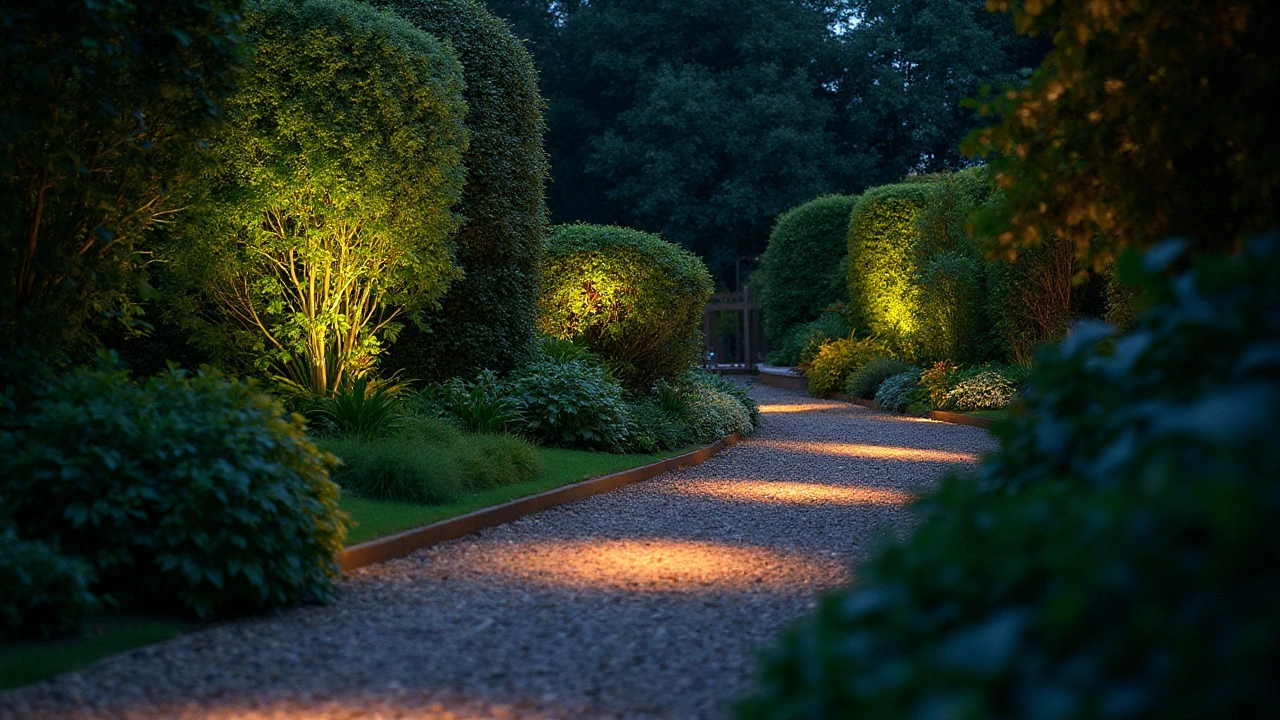
Tips for Choosing the Best LED Color
Selecting the right LED color for your outdoor security lights is more than just a matter of taste. It’s a decision that intertwines aspects of visibility, energy efficiency, and even the psychological impact on your property’s safety. Understanding how different colors affect these factors can guide you toward a more informed choice. Let’s break down some key tips that can help illuminate the path to the perfect lighting.
When it comes to choosing colors, visibility is paramount. Studies have shown that blue and green lights can be more easily discerned in fog or misty conditions compared to traditional white and yellow hues, especially in colder climates. This is due to the scattering of shorter wavelengths, which makes these colors less prone to reflection and more efficient for visibility under adverse conditions. However, consider that blue light may also contribute to increased glare, which can obscure vision and increase light pollution, an aspect that raises concerns among environmentally-conscious homeowners.
Energy consumption is a critical factor when choosing LED color for security lighting. While all LEDs are more efficient than traditional bulbs, the perception of brightness can vary with color temperature. Warmer colors like yellow and orange may require more power to achieve the same perceived brightness as cooler, whiter colors. For energy-conscious individuals, cooler colors might be more advantageous. According to the U.S. Department of Energy, LED lights that emit white or bluish-white hues operate more efficiently and have a longer lifespan, making them cost-effective for continual use.
The aesthetic and psychological impacts of LED color should not be overlooked. While brighter, cooler colors can often create a more secure environment by casting comprehensive illumination, they can sometimes appear harsh and create an unwelcoming ambiance. Warmer tones usually enhance the aesthetic appeal and blend more naturally into landscapes. Research on color psychology suggests that warmer light can incite feelings of comfort and relaxation, potentially deterring intruders by visually enhancing the unity of a space. Utilizing LED lights that can alternate between colors or dim in intensity can provide versatility and adjustability based on your needs.
For those aiming to optimize security, consider integrating a range of light colors across strategic points in your property layout. Using a mixture of LED colors can leverage the benefits of each hue’s unique characteristics. For instance, while brighter, cooler tones light up larger areas and act as effective deterrents in open spaces, warmer hues can be used around entrances and pathways to soften the look without sacrificing security.
To provide an empirical perspective, here’s a small comparison of typical LED colors and their associated benefits:
| LED Color | Visibility Impact | Energy Efficiency |
|---|---|---|
| Cool White | High visibility, suitable for general lighting | Highly efficient with extended lifespan |
| Warm White | Comfortable and welcoming, less strain on eyes | Moderately efficient |
| Blue | Excellent in foggy conditions | High efficiency, less glare control |
| Green | Good contrast with foliage, gentle on eyes | Highly efficient |
According to renowned lighting expert Dr. Emily Popov, "The right color combination can transform a space from intimidating to inviting while maintaining high security standards. Exploring different colors is not just a technical decision but a strategic one.”
Tone blending and strategic placement are key in creating a well-lit and aesthetic outdoor area.

